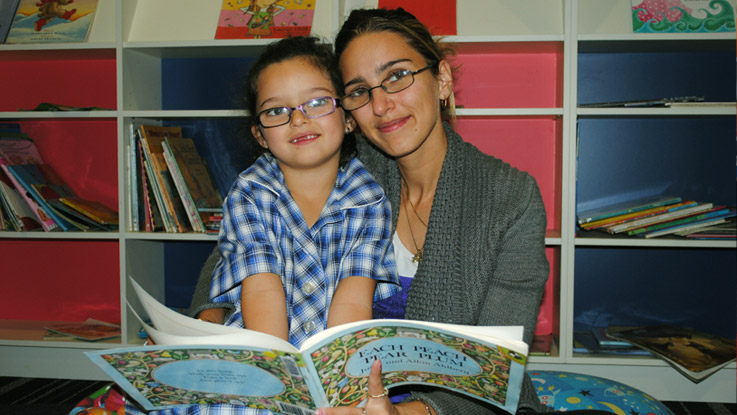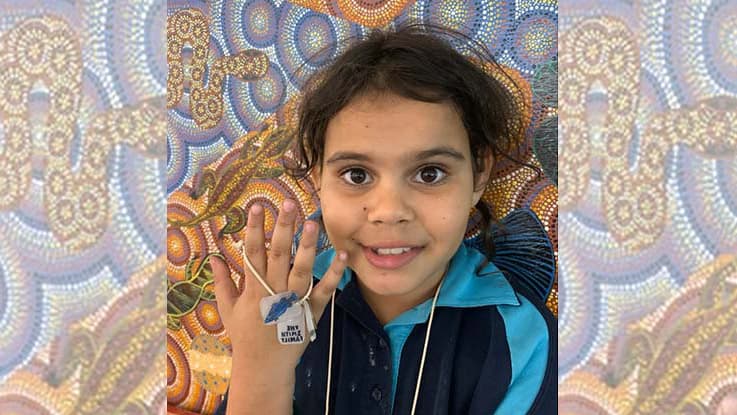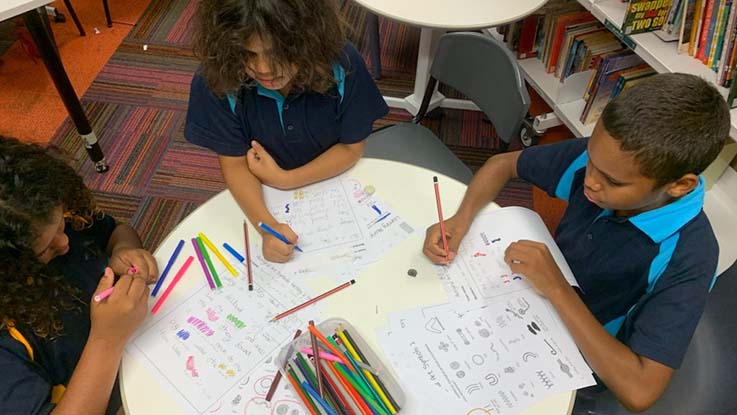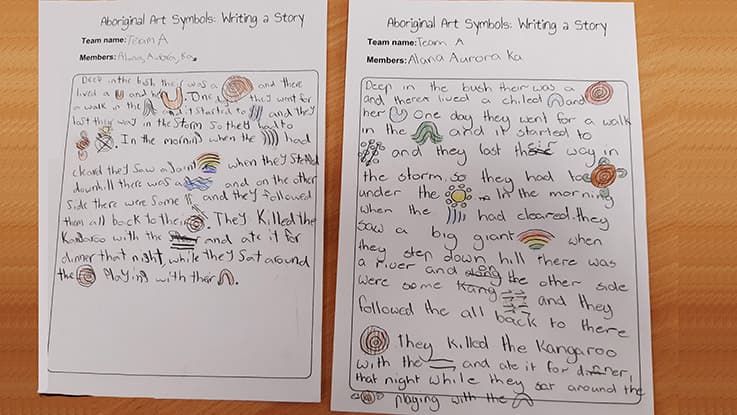
Our learning support and mentoring programs in 90 Australian communities directly help children in need achieve their goals through education.
View all programs 
In recent weeks, students learnt the history of ancient Dreamtime symbols. This included symbols for waterhole, child, forest, and many more. They then sat together and wrote a story incorporating the symbols. They had guidance and support from a tutor trained with your support. Story writing boosted the students’ cultural understanding. They also practiced their literacy and art skills.
Angela, a Smith Family Program Coordinator observed the session. She said: “The students were really engaged and particularly loved acting out their story to the group.”

